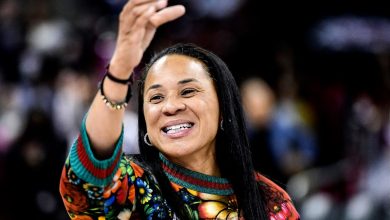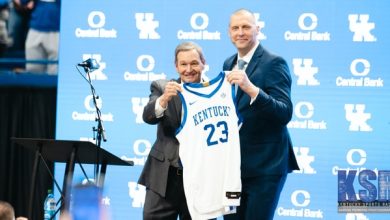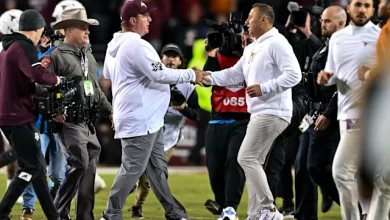HL Rumors Heat Up: Corey Perry’s Future with Oilers in Jeopardy Amid Salary Cap Crunch

HL Rumors Heat Up: Corey Perry’s Future with Oilers in Jeopardy Amid Salary Cap Crunch
The NHL offseason is a whirlwind of speculation, negotiations, and roster puzzles, and this summer, the buzz surrounding Corey Perry’s future with the Edmonton Oilers has reached a fever pitch. The veteran forward, who brought experience and grit to the Oilers’ lineup, now finds his return to Edmonton hanging by a thread as the team grapples with a tightening salary cap situation. With whispers circulating that Perry’s spot on the roster may no longer be guaranteed, Oilers fans and hockey insiders alike are left wondering what lies ahead for the seasoned winger and the club’s broader roster plans.
Corey Perry’s tenure with the Oilers has been a story of highs and lows. When he joined the team, expectations were high that his playoff experience and tenacity would provide a vital boost to Edmonton’s Stanley Cup aspirations. Though his impact was at times mixed, Perry’s presence in the locker room and on the ice was undeniable. Now, however, as the Oilers stare down looming salary cap restrictions, the calculus for retaining veterans like Perry has become increasingly complicated.
The NHL’s salary cap system is a constant balancing act, forcing teams to make tough choices on which players to keep, which to let go, and how best to allocate their limited payroll space. For the Oilers, this summer’s cap crunch is driven by several factors.
First, the team’s star players—Connor McDavid and Leon Draisaitl—command a substantial share of the cap. Their elite talent and consistent dominance come at a high price, naturally constraining the flexibility the front office has to maneuver.
Second, the Oilers have been active in free agency and trades, adding depth and addressing key roster needs. Each new signing chips away at the available cap space, leaving little room for uncertainty or luxury contracts.
Lastly, the team’s own roster composition includes several players due for new contracts or extensions, meaning that decisions on veterans like Perry must be weighed carefully against the need to build a balanced lineup.
At 38 years old, Corey Perry is no longer the prolific scorer or dominant power forward of his prime years. Yet his value to the Oilers went beyond mere statistics. Perry brought toughness, playoff savvy, and an ability to win crucial faceoffs and defensive zone starts that few younger players could match.
In the 2024-25 season, Perry’s ice time was managed carefully, often deployed on checking lines or in penalty kill situations. While his offensive production dipped, his leadership and willingness to embrace a complementary role endeared him to teammates and coaches.
Many within the Oilers organization have praised Perry for his professionalism and mentorship, particularly for the younger forwards looking to develop their game at the NHL level.
Reports emerging from NHL insiders and credible media outlets suggest that the Oilers are facing a difficult decision regarding Perry’s contract renewal. Sources close to the team indicate that while there is mutual respect and a desire to find a solution, the salary cap realities are forcing management to consider alternative roster configurations.
Some rumors hint that the Oilers might prioritize younger, more cost-effective players to fill bottom-six roles, aiming to preserve cap space for core players and potential future acquisitions. This approach, while fiscally prudent, threatens to push veterans like Perry out of the lineup.
Other speculation includes the possibility of trading Perry’s contract to another team looking to add veteran depth for a playoff run. Such a move could free cap space while giving Perry a chance to extend his NHL career elsewhere.
Losing a veteran like Corey Perry would leave a noticeable gap in Edmonton’s forward group. The Oilers rely heavily on the top-six scoring punch, but the depth and reliability of the bottom six are often the difference between playoff success and early exits.
If Perry does not return, the Oilers will need to find replacements who can provide similar defensive responsibility, penalty killing expertise, and locker room leadership. This may come in the form of younger players stepping up or new free agent signings, but both routes carry inherent risks.
Moreover, the team’s coaching staff will be tasked with reconfiguring lines and roles to maintain balance and competitiveness throughout the grueling NHL season.
Oilers fans have expressed a mix of gratitude and concern over the rumors. Many appreciate Perry’s contributions and character, recognizing the importance of veteran presence in a championship-contending team.
At the same time, supporters understand the brutal realities of salary cap management and the necessity of tough decisions to build a sustainable, winning roster.
Social media conversations reveal an outpouring of respect for Perry’s career and a hope that he might remain in Edmonton or find a fitting home elsewhere, ideally in a role where his experience can be maximized.
The situation with Corey Perry highlights a broader challenge faced by many aging NHL veterans. As the league becomes faster and younger players emerge, teams must balance loyalty and experience against the practicalities of salary cap economics and on-ice performance.
Veteran players often face shortened contracts, reduced roles, or relocation to teams seeking playoff depth rather than long-term solutions. For players like Perry, adapting to these changing dynamics is essential for prolonging NHL careers.
Additionally, the rising emphasis on analytics and speed has shifted how teams value different skill sets, sometimes disadvantaging older players known more for grit and leadership than pure scoring.
If the Oilers ultimately decide not to retain Perry, several paths remain open. One option is exploring opportunities with other NHL teams, particularly those aiming to bolster their playoff depth with experienced forwards.
Alternatively, Perry might consider a transition to a mentoring or developmental role within the sport, such as coaching, player development, or broadcasting—avenues many former players pursue to stay connected to hockey.
There is also the chance that Perry could accept a professional tryout (PTO) contract to prove his continued value or sign a reduced role contract elsewhere, extending his playing days.
In situations like this, clear communication between players, management, and fans is vital. Rumors and speculation can sometimes cloud the narrative, so hearing directly from team leaders or Perry himself would help provide clarity.
The Oilers’ front office has a reputation for professionalism, and their handling of Perry’s situation will be closely scrutinized. Balancing respect for a veteran player with the pragmatic needs of the roster is a delicate task.
Fans will be watching closely to see if the Oilers can find a win-win solution that honors Perry’s legacy while advancing the team’s competitive goals.
The uncertainty surrounding Corey Perry’s future with the Edmonton Oilers is more than just a contract dispute or a cap problem. It reflects the evolving nature of NHL roster building, the harsh realities of professional sports, and the bittersweet challenges veterans face as their playing days wind down.
For Edmonton, the decisions made in the coming weeks will shape their roster’s depth, chemistry, and culture heading into the new season. For Perry, the outcome will determine whether his journey with the Oilers continues or if he embarks on a new chapter elsewhere.
As fans, analysts, and insiders continue to watch this story unfold, one thing remains clear: the intersection of loyalty, performance, and business in hockey has never been more complex, and the next move could be pivotal for both Corey Perry and the Oilers’ Stanley Cup ambitions.









